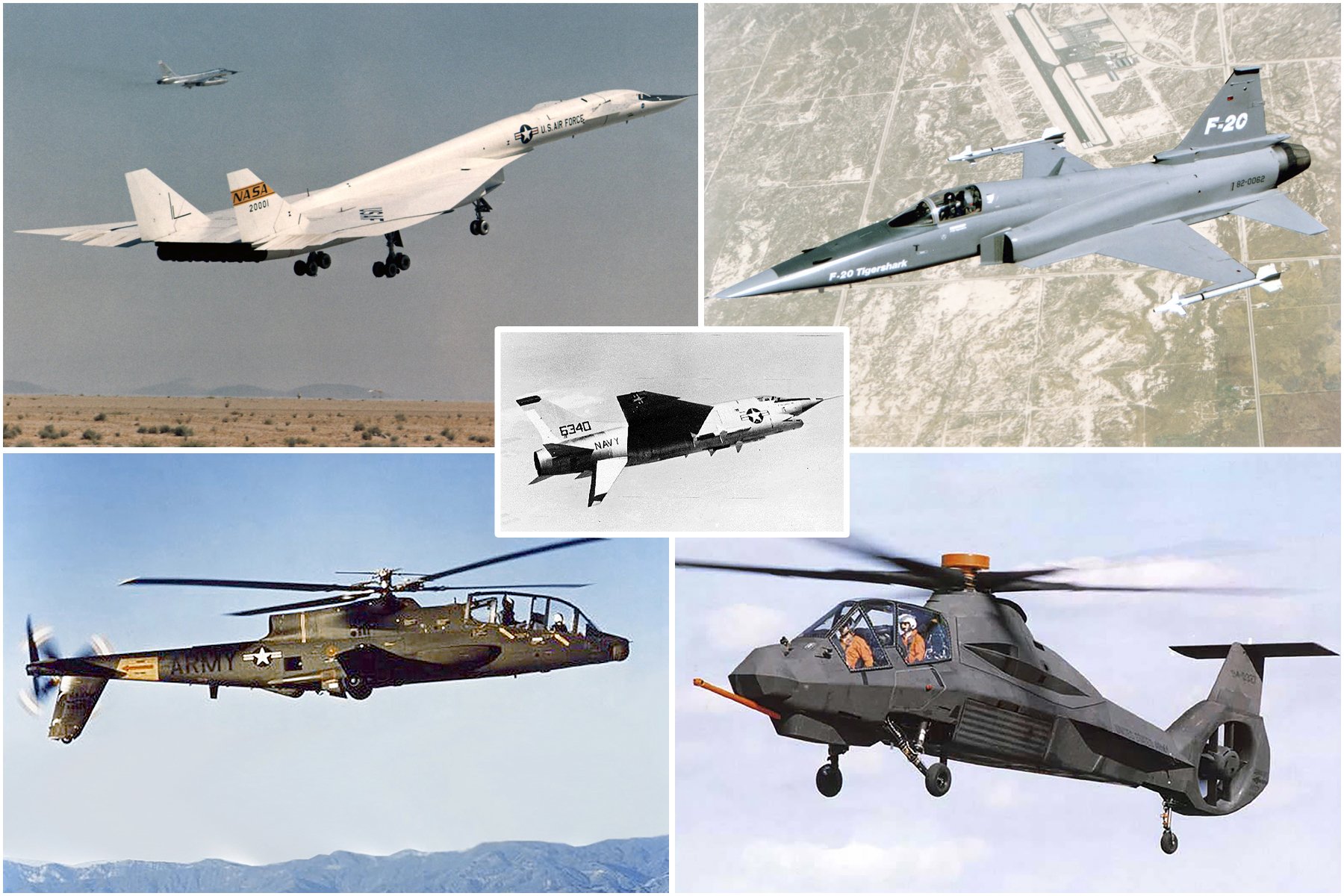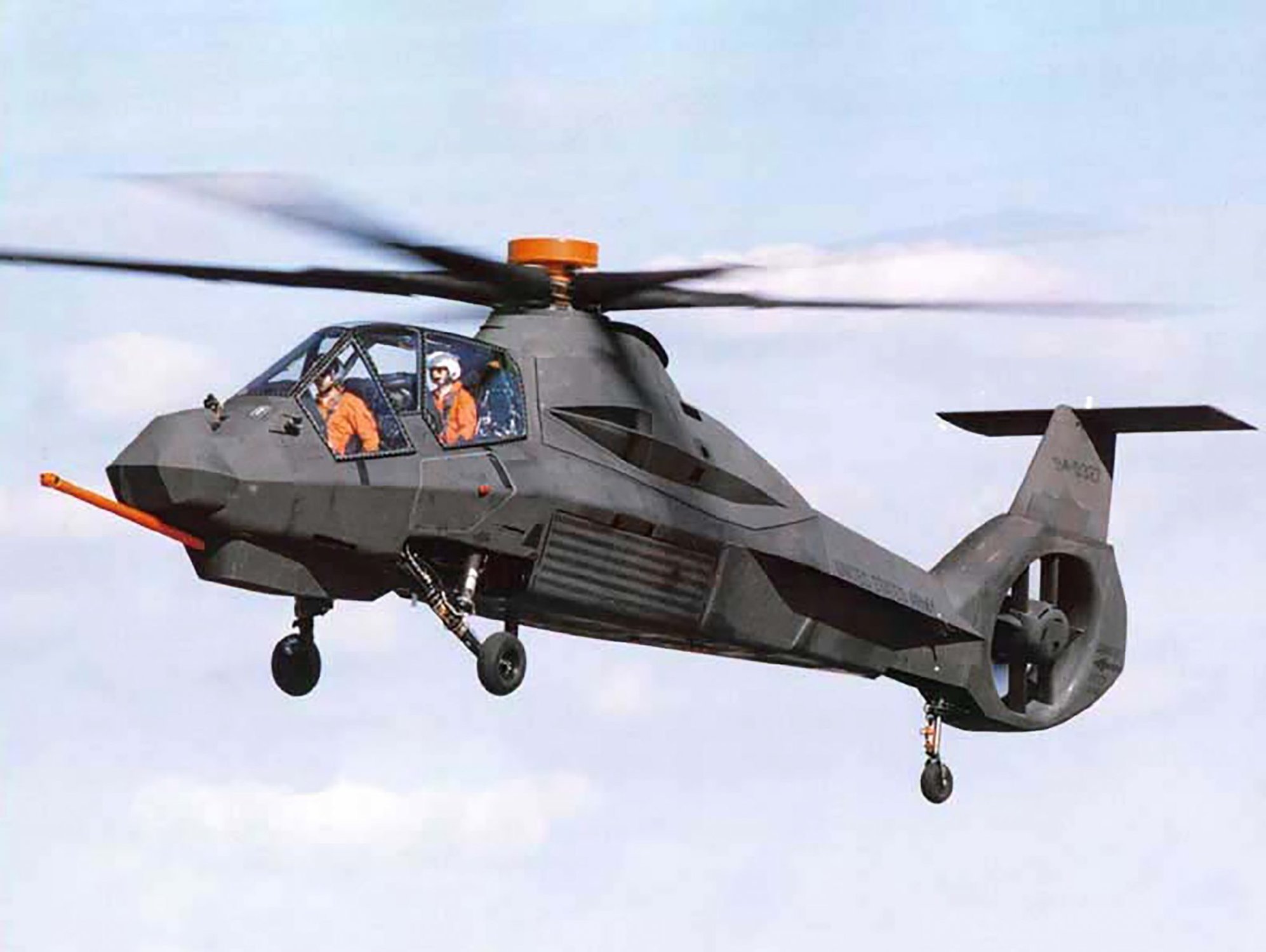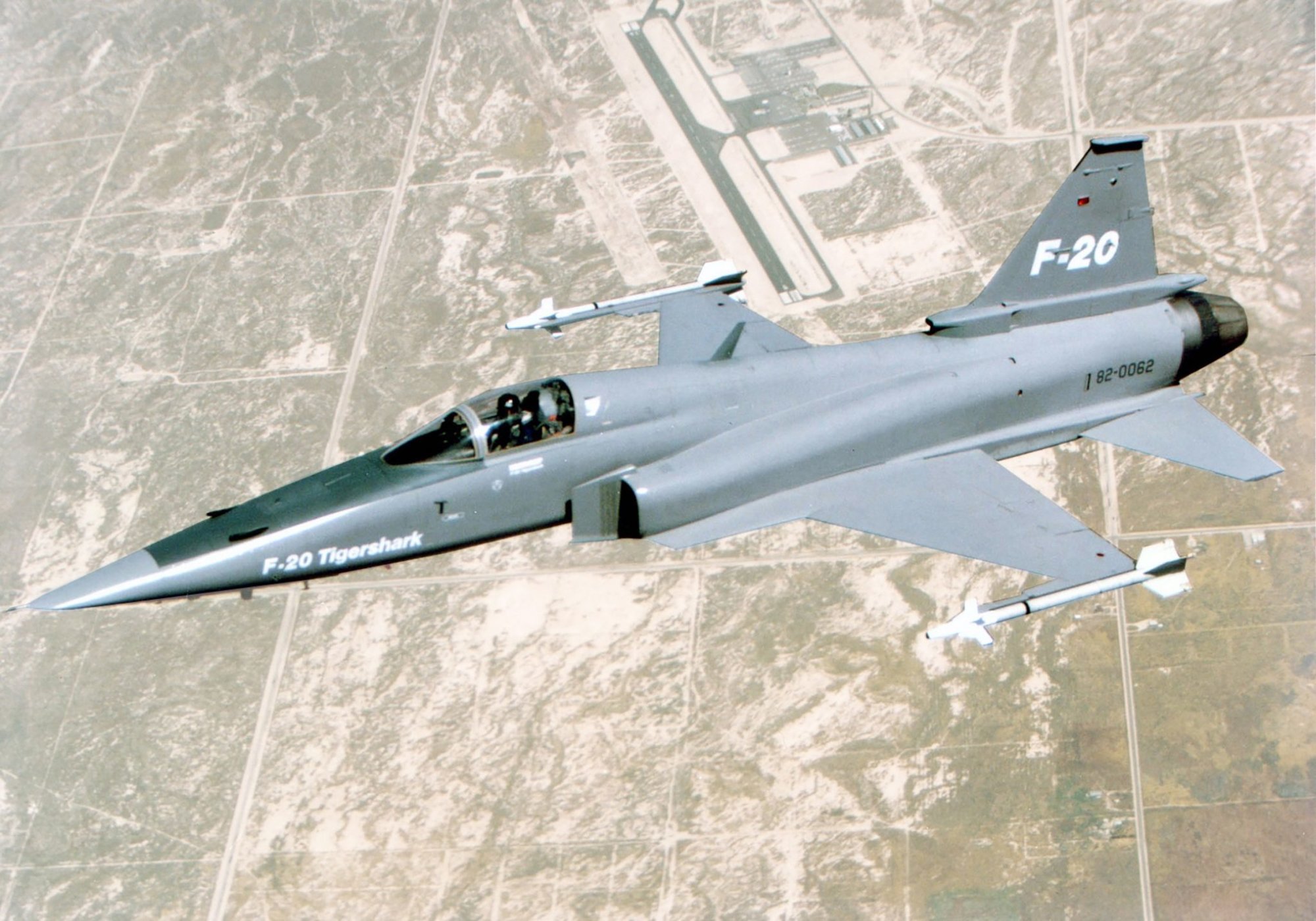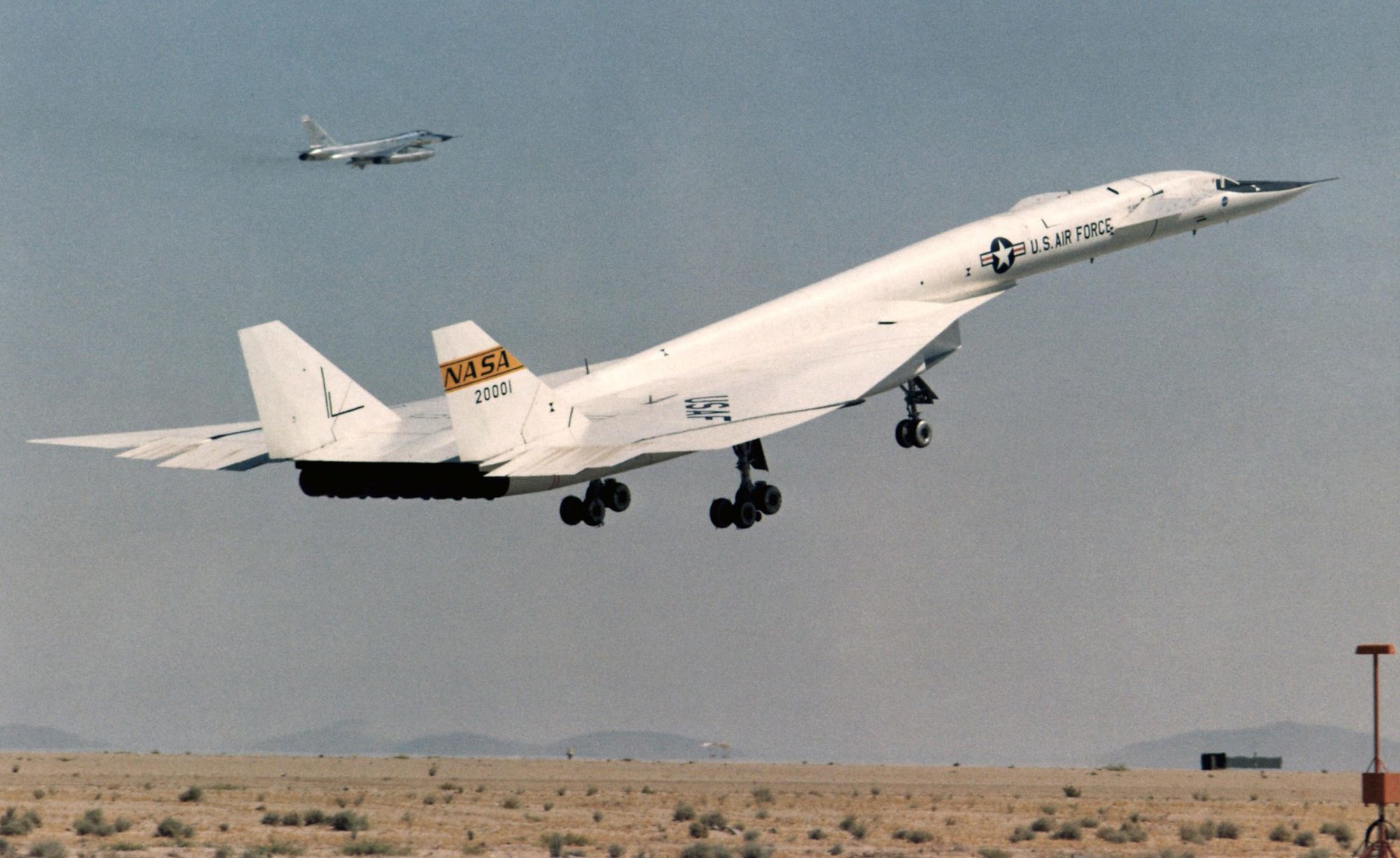
Sometimes aircraft are just a bit too awesome for service in the US military. There are many mundane reasons why some outwardly amazing planes don’t end up in service. Sometimes, the excuses are simple: Budgets got cut. Other times, they’re more complicated. Maintenance and logistics costs aren’t the sexiest elements of military acquisition, but they’re just as important as tactical performance.
Mundane budget trade-offs aside, these five aircraft had real shots at becoming front-line workhorses but for a little bad luck. They might have made big differences in the military’s table of equipment had they been allowed to continue on.
AH-56 Cheyenne
The Army had a hell of an aircraft lined up in the latter stages of the Vietnam War. The Cobra attack helicopter was immensely successful in Vietnam, and the Army wanted to follow it up with something more survivable and suited to a potential fight with the Soviet Union.

The Cheyenne was a compound helicopter, making it incredibly fast, over 200 knots. It had not one but two turreted cannons. The gunner’s seat spun around to stay on target. It even had a rudimentary data link (this was the 1960s) to transmit spotting information to artillery batteries. It was so capable that the Air Force thought it might violate the post-war Key West Agreement proscribing Army attack airplanes.
In the end, a crash during flight testing plus rising costs spelled the end for the Cheyenne. The Army still hasn’t gotten a rotorcraft with its speed and range in the nearly half-century since the cancellation.
RAH-66 Comanche
Another helicopter, more famous than the Cheyenne, was a technological marvel of a different kind. Harkening back to the very idea of a cavalry scout, the RAH-66 was a stealth helicopter designed with a low radar cross-section and infrared signature, able to sneak up on the enemy and perform air control missions as well as designate targets for the Apache.

And the Comanche packed a punch in its own right. It could carry up to six Hellfires internally and another eight externally if you didn’t care about stealth. If you wanted to go air-to-air, it could unleash up to 28 Stingers, and it could sling plenty of lead with a 20 mm cannon.
Between the stealth and the weaponry, the Comanche could have put a serious amount of hurt on Soviet armored columns. Unfortunately, the aircraft would also have put a hurt on the military’s wallet. One estimate stated that had the Comanche entered service, it would have taken up to 80% of the Army’s aviation budget.
F-20 Tigershark
What if you could get an aircraft that had the performance of an F-16 for 20% less on the purchase price and was easier and cheaper to maintain? Plus, this aircraft could fire radar-guided missiles, which the F-16 of the time couldn’t. Sounds like a pretty sweet ride, right? That aircraft was the F-20 Tigershark.

Basing it on the successful F-5 airframe, with a more powerful J79 engine and improved avionics, Northrop built the Tigershark primarily for export sales, thinking that it would be a natural fit for the many air forces already flying the wildly successful F-5 series.
Unfortunately, even with a paid endorsement from legendary pilot Chuck Yeager, the lack of enthusiasm for the aircraft from the Foreign Military Sales program — plus the fact that no American service adopted the F-20 — ended any hope of wide adoption. Northrop killed it after spending $1.2 billion of its own money on the program.
XF8U-3 Crusader III
The F-8 Crusader was such a renowned dogfighter during the first part of the Vietnam War that there was a saying: “When you’re out of F-8s, you’re out of fighters.” Part of this was due to the fact that the F-8 kept not one, not two, but four 20 mm cannons. The F-4 Phantom II was initially stuck with only the incredibly unreliable air-to-air missiles of the time.

The Crusader III was intended to succeed the F-8, adding Mach 2.3-plus speed and a 0.97 thrust-to-weight ratio to the family’s already impressive maneuverability. In the words of those who flew it, the aircraft could fly circles around the F-4.
Unfortunately for the Crusader III, while it was really good at one thing, the F-4 was pretty good at a lot of things. The F-4 became a legendary multirole aircraft serving in several conflicts, while Vought’s Crusader III became an interesting side note.
XB-70 Valkyrie
The XB-70 is what an 8-year-old boy would draw if you told him to make a bomber. With a futuristic silhouette, canard elevators, delta wings, and no fewer than SIX engines, the Valkyrie could cruise at Mach 3 at an altitude of 70,000 feet for extended periods.
With that kind of speed, it was thought that it could be well out of range by the time enemy interceptors could be launched, much less catch up to it. This seemed to be a great idea in 1955, when the requirement was developed. But even by 1959, the Air Force realized that new Soviet surface-to-air missiles made the idea of a high-altitude bomber obsolete. Bombers would need to fly low to avoid detection, and at low altitudes, the XB-70 was barely faster than the B-52 and carried fewer bombs. The program was greatly scaled back.

But the Cold War politics of the 1960 election intervened to save the program. After all, in view of the supposed “missile gap” between the US and USSR, it would be irresponsible to cancel such a high-tech wonder weapon. Both Nixon and Kennedy endorsed the program during the campaign. Soon after he took office, Kennedy learned that the supposed missile gap was overblown and scaled back the program to research only. Despite politicking by bomber advocates and congressmen, the cancellation stuck, though the aircraft continued to perform as a research vehicle until 1969.
At first blush, the Valkyrie and its fellow monuments to military hubris would seem to amount to a lot of wasted money, effort, and, in some cases, lives. But the knowledge gained in these efforts has lived on, such as the Comanche’s stealth helicopter technology being applied in the modified Black Hawk used in the Usama Bin Laden raid. More important, it shows that sometimes the military is not afraid to discard the sunk cost fallacy when requirements and technological changes demand it.
Read Next: Meet the F-15EX ‘Eagle II,’ the Air Force’s Newest Fighter

BRCC and Bad Moon Print Press team up for an exclusive, limited-edition T-shirt design!
BRCC partners with Team Room Design for an exclusive T-shirt release!
Thirty Seconds Out has partnered with BRCC for an exclusive shirt design invoking the God of Winter.
Lucas O'Hara of Grizzly Forge has teamed up with BRCC for a badass, exclusive Shirt Club T-shirt design featuring his most popular knife and tiomahawk.
Coffee or Die sits down with one of the graphic designers behind Black Rifle Coffee's signature look and vibe.
Biden will award the Medal of Honor to a Vietnam War Army helicopter pilot who risked his life to save a reconnaissance team from almost certain death.
Ever wonder how much Jack Mandaville would f*ck sh*t up if he went back in time? The American Revolution didn't even see him coming.
A nearly 200-year-old West Point time capsule that at first appeared to yield little more than dust contains hidden treasure, the US Military Academy said.












